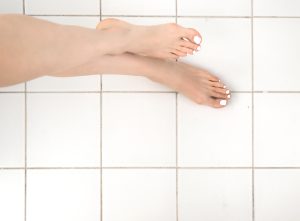Wood floors are beautiful, but they need proper care to stay looking their best. Don’t worry though – it’s not complicated. With the right approach, you can keep your floors gorgeous for years to come. Here’s what you need to know.
Daily Care That Makes a Difference
Keep It Clean and Simple
The best thing you can do for your wood floors is sweep or hoover them regularly. Dirt and grit act like sandpaper under your feet, slowly wearing away the finish. A quick sweep every day or two prevents this damage.
Use a soft-bristled broom or a hoover with a hard floor setting. Avoid beater bars – they can scratch the wood.
Deal With Spills Straight Away
Water is wood’s biggest enemy. If you spill something, clean it up immediately. Don’t let liquids sit on the wood, even for a few minutes. This prevents staining and stops water from seeping into the wood grain.
Use a slightly damp cloth, then dry the area completely. That’s it.
Weekly Deep Clean
The Right Way to Mop
Yes, you can mop wood floors, but there’s a right way to do it. Use a barely damp mop – it should be almost dry. Too much water will damage the wood.
Choose a cleaner made specifically for wood floors. Regular household cleaners can strip the finish or leave a residue that makes your floors look dull.
Work in small sections and dry each area as you go. Never let water pool on the surface.
Protect Your Investment
Use Mats and Rugs Wisely
Put mats at every entrance to catch dirt and moisture before it reaches your floors. This simple step prevents most damage.
Inside your home, use rugs in high-traffic areas like hallways and in front of sinks. Just make sure the rugs have breathable backing – rubber or plastic backing can trap moisture and damage the wood underneath.
Furniture Pads Are Essential
Put felt pads under all furniture legs. This prevents scratches when you move chairs or tables. Replace the pads when they get dirty or worn – dirty pads can actually cause more scratches than no pads at all.
For heavy furniture that doesn’t move often, check the pads every few months to make sure they’re still in good condition.
Control Your Home Environment
Humidity Matters More Than You Think
Wood expands and contracts with changes in humidity. Too much humidity makes wood swell and buckle. Too little makes it shrink and create gaps.
Keep your home’s humidity between 30-50%. Use a dehumidifier in summer and a humidifier in winter if needed. Your floors (and your family) will be more comfortable.
Temperature Consistency Helps
Try to keep your home’s temperature fairly steady. Big temperature swings make wood expand and contract more, which can cause problems over time.
This doesn’t mean you can’t adjust your thermostat, just avoid extreme changes when possible.
What to Avoid
Don’t Use These Cleaning Products
- Vinegar (it’s acidic and can damage the finish)
- Bleach or ammonia-based cleaners
- Oil soaps (they leave a residue)
- Steam mops (too much moisture and heat)
- Wet mops (too much water)
Don’t Let These Things Happen
- Never drag heavy furniture across the floor
- Don’t walk on wood floors with high heels or damaged shoe soles
- Avoid leaving wet towels or clothes on the floor
- Don’t ignore scratches or damage – small problems become big ones
When Problems Occur
Small Scratches and Scuffs
Minor surface scratches often buff out with a soft cloth and a tiny amount of wood floor cleaner. Rub gently in the direction of the wood grain.
For slightly deeper scratches, try a wood touch-up marker that matches your floor colour. Test it in an inconspicuous area first.
Water Stains and Marks
White marks from water rings usually mean the moisture hasn’t penetrated deeply. Try buffing them out with a soft cloth and a small amount of mayonnaise or toothpaste (seriously – the mild abrasives help). Wipe clean afterwards.
Dark stains are more serious and may need professional attention.
When to Call the Professionals
Some problems need expert help:
- Deep gouges or scratches
- Widespread water damage
- Cupping or warping boards
- Gaps between boards that suddenly appear
- Finish that’s wearing off in large areas
Don’t try to fix these yourself – you might make things worse.
Refinishing: Giving Your Floors New Life
When It’s Time
Most wood floors need refinishing every 7-10 years, depending on traffic and care. Signs it’s time include:
- The finish looks worn or dull
- You can see the wood grain through the finish
- Scratches won’t buff out
- Water soaks in instead of beading up
What to Expect
Professional refinishing involves sanding down to fresh wood, then applying new stain and finish. It takes a few days and you’ll need to stay off the floors while they cure.
The result is floors that look brand new again.
Seasonal Care Tips
Spring and Summer
- Use dehumidifiers if your home gets too humid
- Clean more often if you have more foot traffic
- Check and replace door mats regularly
Autumn and Winter
- Add humidity back into dry winter air
- Clean salt and moisture from shoes before walking on floors
- Consider using humidifiers to prevent gaps from forming
The Bottom Line
Good wood floor care isn’t complicated, but it does need to be consistent. A few minutes of daily care prevents hours of repair work later.
Remember: sweep regularly, clean spills immediately, control humidity, and protect the surface. Follow these basics, and your wood floors will stay beautiful for decades.
At Kent Flooring, we’ve seen floors that look amazing after 20+ years because the owners followed simple maintenance routines. We’ve also seen floors that needed expensive repairs after just a few years of neglect.
The choice is yours, but the routine is simple. Your floors will thank you for it.




